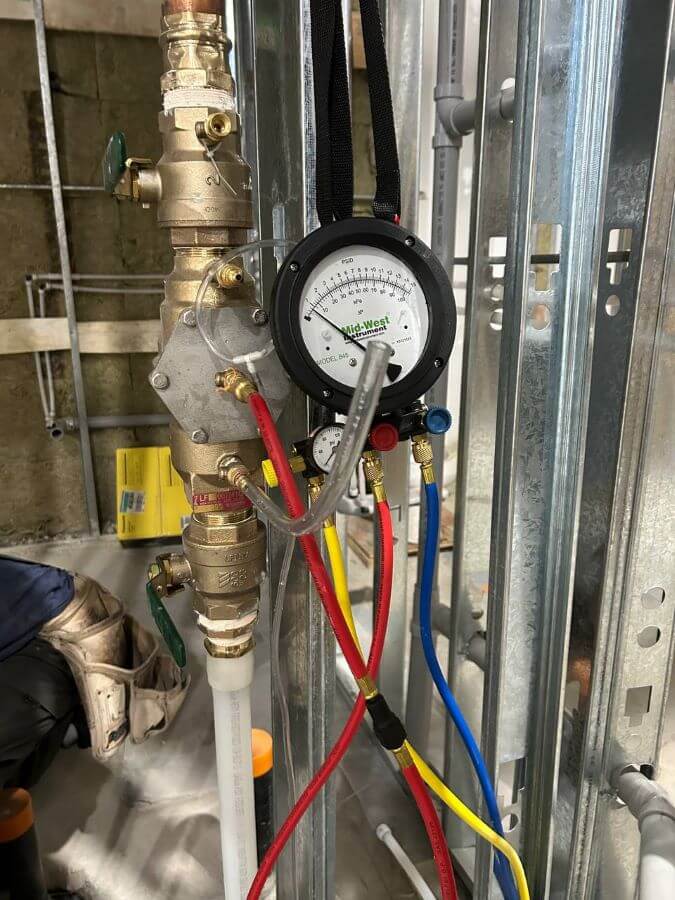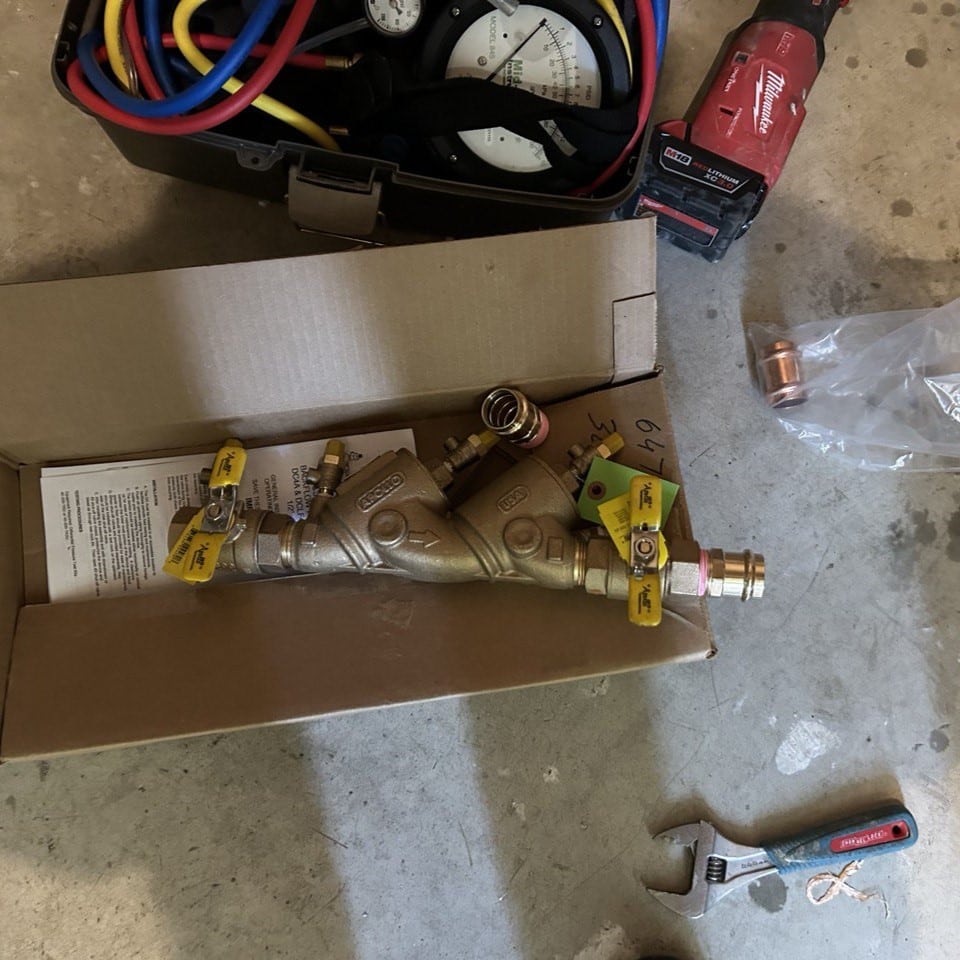At MT Drains & Plumbing, we understand the importance of maintaining the safety and quality of the public water supply in Toronto. That’s why we offer comprehensive backflow prevention services to our clients, including annual inspections and tests that satisfy Toronto’s requirements.

The City of Toronto has implemented a mandatory requirement, as stated in the Water Supply By-law, for property owners of industrial, commercial, institutional, and certain residential properties to install backflow prevention devices on their water supply lines. This regulation also applies to construction sites. The purpose of this requirement is to safeguard the city’s drinking water by isolating buildings from the municipal water distribution system and preventing the entry of contaminants into the drinking water supply. By installing backflow prevention devices, property owners contribute to maintaining the safety and purity of Toronto’s water resources.
Our skilled team ensures your water remains uncontaminated.
We navigate Toronto's regulations seamlessly.
We handle all reporting, ensuring compliance with ease.
We value your time and deliver efficient service.
We tailor our services to your needs.
Quality service at affordable rates.
Installing and maintaining a backflow prevention device is crucial for protecting public health and safety, as well as avoiding fines and legal consequences. Non-compliance with Toronto’s Water Supply By-law can result in significant fines, which may exceed $100,000.
Our backflow preventor failed, and Eddy from MT Drains & Plumbing Plumbing saved the day! He tested and replaced it swiftly, ensuring we’re safe from costly fines. We’re grateful for his quick and expert service – highly recommend!


There are two types of backflow prevention devices that are commonly used to prevent backflow incidents. The first type is a Double Check Valve Assembly (DCVA), which is typically required for facilities that are classified as “moderate hazard.” DCVAs are designed to provide protection against low to moderate risk of backflow incidents.
The second type is a Reduced Pressure Principle Assembly (RP), which is required for facilities that are classified as “severe hazard.” RPs offer more comprehensive protection against high-risk backflow incidents.
In summary, understanding backflow terms, the importance of backflow prevention, and the need for periodic testing of backflow preventers is crucial for safeguarding the integrity and safety of public water systems.